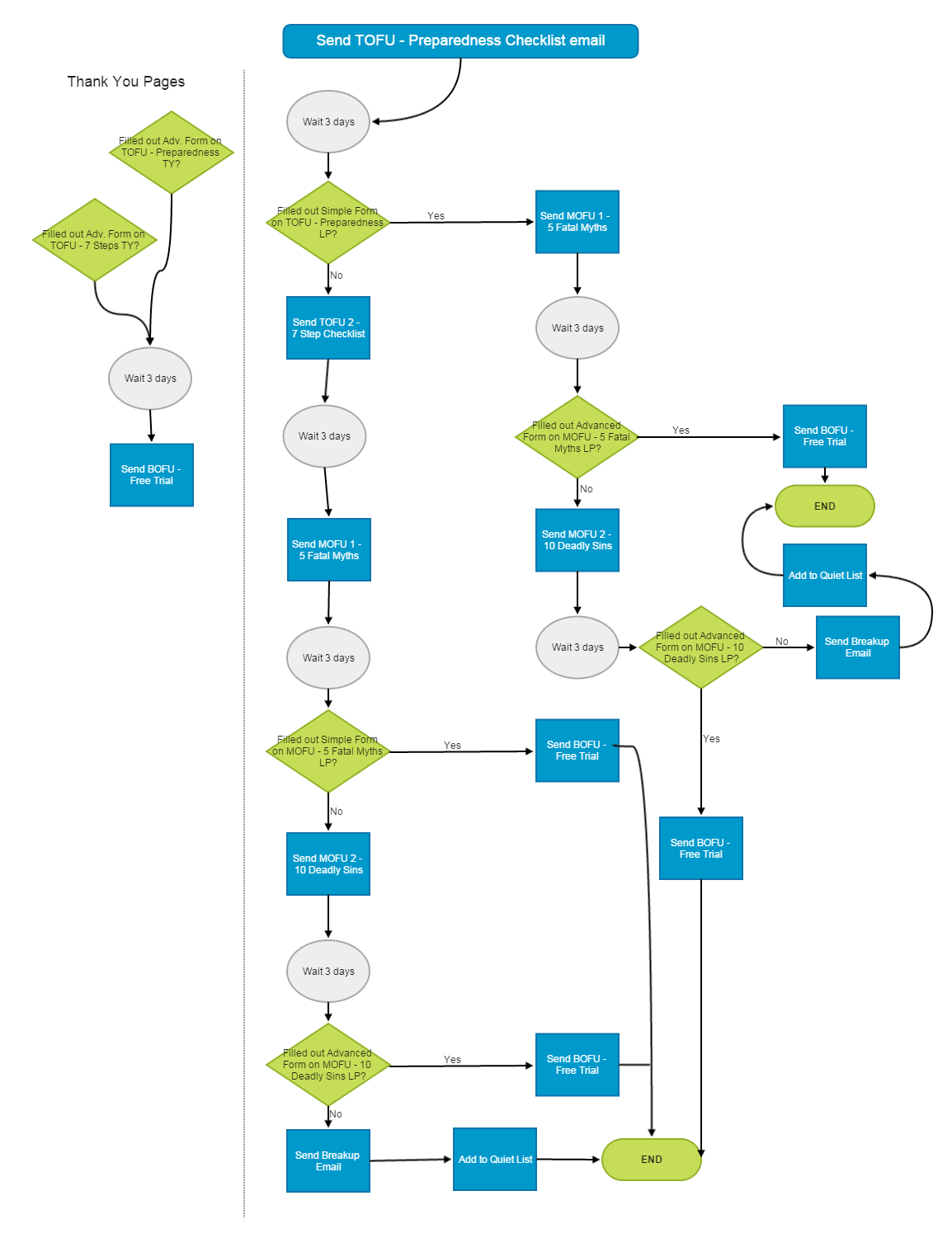 One of the most common reasons HubSpot customers engage us is that they are not seeing the results they expected. Sometimes this comes from over exuberance when they purchase HubSpot and think that everything will now be easy.
One of the most common reasons HubSpot customers engage us is that they are not seeing the results they expected. Sometimes this comes from over exuberance when they purchase HubSpot and think that everything will now be easy.
Usually, however, we get involved when there is a change of marketing leadership in the company, and the new person needs help driving immediate results. This was the situation we found with a recent new B2B client. As we started their HubSpot cleanup, reviewed their HubSpot settings, and re-configured their HubSpot email up to best practices, we discovered that they had an email list of over 5000 contacts, and that they had no current blog posts and website traffic of only 500 visitors per month.
Their 5000 contacts were not segmented, and most had not been contacted in a long time, so this was essentially a cold email list. Since our client wanted immediate results, it made sense to create re-engagement campaign to reach out to the 5000 contacts with some quality offers.
Creating a re-engagement campaign (a recipe)
A re-engagement campaign is sort of like making lasagna. You have those foot-long flat lasagna noodles that need to be cooked. There is sauce to be made. Meat or veggies need to be cooked, and cheese grated or crumbled. Then it all needs to be carefully assembled, given a final shake of parmesan cheese, and baked. Our process for the re-engagement campaign also broke down into multiple steps.
Five offers
We worked with the client to create an email-based re-engagement campaign that consisted of 2 top-of-funnel offers, 2 middle-of-funnel offers, and 1 bottom-of-funnel offer. We wrote the downloadable content for the offers, and created landing pages, thank you pages (with reconversion) and all the emails, and then “stitched” it all together with an intricate workflow that handled almost everything (more on the “almost” part later).
Start with five emails
We had 5 offers (2 TOFU, 2 MOFU, and 1 BOFU) and therefore created 5 emails, each one promoting a different offer. If the recipients didn’t convert on anything, they would get these five emails, then a breakup email, and finally they would be added to a “quiet list” for long-term nurturing.
Add five landing pages
Each offer had its own landing page which showcased the benefits of the offer and an image of the offer. We used a simple form on the TOFU landing pages, asking only for name and email address.
On the MOFU and BOFU landing pages, we used a much longer form that relied on progressive profiling to reveal more and more of the various fields. With the data from these fields, we could better segment the contacts for future campaigns.
Add the fresh herbs thank you emails to each landing page
We opted to use thank you emails attached to each landing page, rather than building these into the final workflow. The thank you email simply thanks the visitor and provides a link for them to download the item they requested.
Stir in five thank you pages
Thank you pages should accomplish 3 things:
- Provide new contacts with their promised offer
- Return the website navigation
- Keep leads engaged with the company through the use of another CTA (offer).
We began each thank you page with a message of thanks, followed by a link to the downloadable offer, and make it very clear where the visitor should click to get the offer.
Then we copied & pasted the content from landing page for the next offer that would attract the visitor further down the sales funnel, and included the longer form for their conversion.
(By the way, thank you pages should be excluded from Google and other bots since we want visitors to complete a form before they have access to the information. We achieved this by adding <meta name=”robots” content=”noindex”> to the Options > Head Section HTML field of the landing page.)
Assemble the lasagna workflow
Here’s where it got fun! Our client kept asking about how everything would be “hooked up” so we created a master diagram of the workflow process.
 (Click to view a larger image)
(Click to view a larger image)
The multiple if/then branching was designed to fit into the HubSpot workflow process. Note that the initial email offer (Preparedness Checklist) was sent as a scheduled email, so that we could take advantage of:
- Exclusion lists (excluding employees, vendors, competitors, and prospects currently in the sales process
- Creating a smart list of contacts where emails were delivered (since this was a cold list, we expected a lot of undeliverable emails)
The smart list of delivered contacts was the starting criteria for this workflow.
Add a sprinkle of parmesan cheese Oops! What if someone reconverted on a thank you page?
If you look carefully at the diagram above, you’ll see that there are no thank you pages shown. That’s because these thank you pages are outside of that workflow.
If a visitor downloaded a MOFU offer and reconverted on the BOFU offer, the client’s sales team would be alerted and would call the prospect. But we needed a little workflow to handle the situation where a visitor downloads one of the 2 TOFU offers and then reconverts on the MOFU offer that’s on the same page. So we added a short workflow (seen on the left above) to delay for 3 days and then send a BOFU offer.
Bake the lasagna Release the carrier pigeons
Finally, with everything checked and double-checked and approved, it was time to schedule the initial email. This email went out to the 5000 contacts, MINUS the excluded employees, vendors, competitors and prospects already active in the sales process, or about 4200 people.
Within a few hours, we had the following results:
- Emails delivered: 3800
- Hard bounces: 294 (expect high number of bounces for cold email list)
- Soft bounces: 136
- Email open rate: 20% (excellent for cold email list)
- Email click-through rate: 2% (expected result for cold emails)
- 1st landing page conversion rate: 30% (surprising good result)
- Website visitors: ↑98%
The results
Everybody likes lasagna, and our client sure likes the initial results of this campaign! Given the price tag of their services, we’re well on the way to achieving at least 300% ROI for this HubSpot customer.
If you have a list of contacts who are not visiting your website to read your blog or download information, you might consider creating your own re-engagement campaign.
In the bigger picture of things, we’ll be blogging for this client, re-designing their website (and making it mobile-friendly), creating webinars, and continuing with extended lead nurturing campaigns. We’ll also work with them on event promotion for the trade shows they attend, and various PR activities to build their thought leadership.
Photos courtesy of wikimedia.org and Juhan Sonin on flickr.




